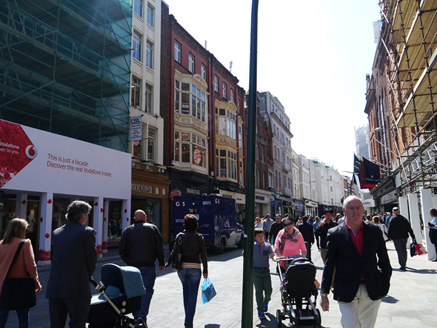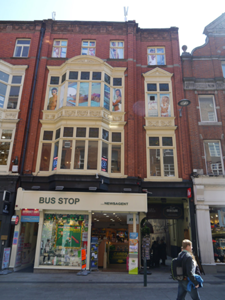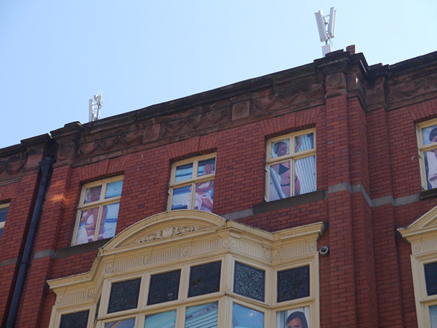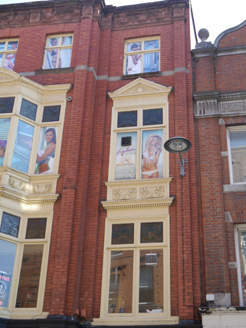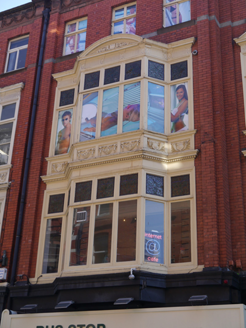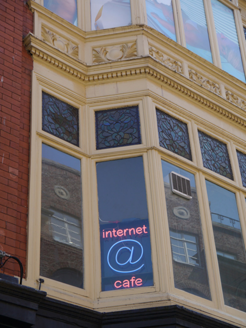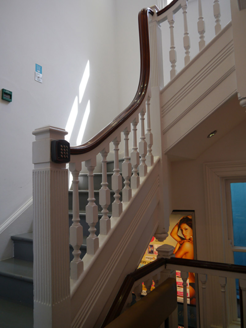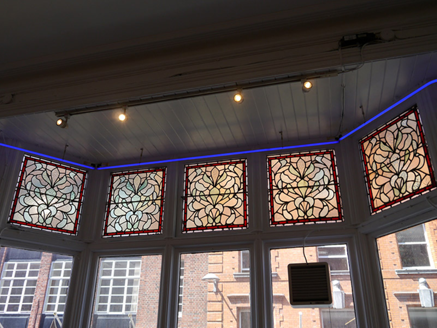Survey Data
Reg No
50100006
Rating
Regional
Categories of Special Interest
Architectural, Artistic
Original Use
Shop/retail outlet
In Use As
Shop/retail outlet
Date
1900 - 1905
Coordinates
315986, 233899
Date Recorded
28/07/2016
Date Updated
--/--/--
Description
Attached four-bay four-storey commercial building, built 1902 as one of unequal pair, with recent replacement shopfront, and south bay set back with passage entry access to ground floor; fully abutted to rear. Hipped slate roof, except for south bay which is flat, all concealed by red sandstone parapet with moulded cornice and frieze detailed with swags and panels carved with paterae. Concealed rainwater goods. Flemish bond orange brick walling, with giant pilasters to sides and projecting section. Square-headed openings to top floor with plain brick reveals, slightly projecting key blocks, flush sandstone sills, and mullion-and-transom casement windows; first and second floors lit to projecting section by full-width double-height glazed oriel corbelled out from shopfront fascia, with original glazing configuration retained and having mullion-and-transom multiple-pane timber-framed casement windows with leaded and stained upper panes, canted central section and decorative apron panels, fluted frieze with roundels, topped by cornice and segmental pediment, and having dentillated cornice; first and second floor openings to south bay have similar decorative treatment, with single mullion-and-transom casement windows with triangular pediments. Side elevation has six-over-six pane timber sliding sash windows with plain reveals; other openings altered for nightclub use.
Appraisal
No. 6 Grafton Street is one of a lively pair of commercial buildings by the architect L.A. McDonnell and built in the early years of the twentieth century. It is characterized by a blend of sandstone and vibrant orange brick and enlivened by a curious blend of neo-Classical and neo-Baroque ornamental devices. Unlike its neighbour, the fenestration, including stained-glass windows, remains intact, although this is somewhat offset by the loss of the original shopfront, the quality of which can be gauged from Nos. 4-5. The building contributes to the architectural vitality and eclecticism of Grafton Street, which was largely developed in the nineteenth century and is celebrated as Dublin's premier retail street.
